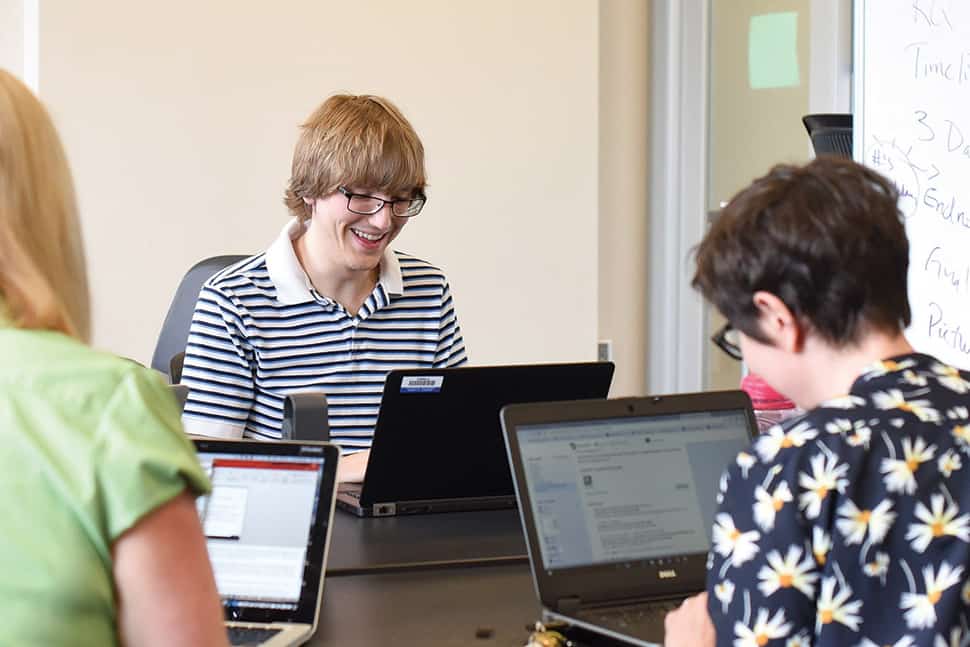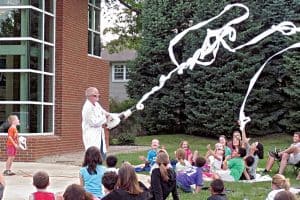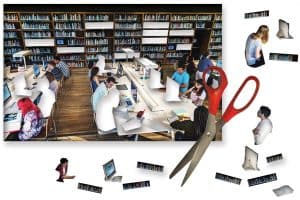
The race is on at universities in Kansas and Minnesota, where a new method of highly intensive research is uniting librarians and faculty to accomplish big projects over short periods of time. The so-called research sprints are being pioneered at University of Kansas and University of Minnesota libraries, and its designers are spreading the word.
Karna Younger, faculty engagement librarian at Kansas University Libraries, says the idea of research sprints—during which faculty and librarians work together for about a week on the same project, and, more importantly, in the same space—is not a wholly new idea. But the approach is being formalized into a method that can be replicated.
“It allows librarians a way to publicize and market what they do in a way that captures faculty members’ attention,” Younger says.
Sprints at the two universities have focused on projects with a wide range of subject matter, including making a smartphone app that features information related to the 1955 murder of Emmett Till; creating scientific research models for a geology course; collecting historical sources for a stage play that focuses on denim and the mythology of the 1848 California gold rush; and creating a supply management research tool.
The schools also have presented the method to groups like the Coalition for Networked Information, Younger says.
Kansas has been running sprints since 2016, “borrowing from time-bounded, fast-paced, collaborative work formats in fields like design and web development,” the schools note in a 2018 white paper.
The sprints aren’t just producing real-world results. They’re also a form of outreach to help faculty better understand the potential for libraries to assist with research, says Benjamin Wiggins, program director of Digital Arts, Sciences, and Humanities for University of Minnesota Libraries and affiliated assistant professor of history at the university.
“What I think we’re really trying to do is open up the possibilities to them and give [faculty] a sense of what libraries are today,” he says. “The way librarians are supporting and collaborating in research is changing very fast. We are moving away from ‘Let’s simply collect all the things that scholars produce’ to more supporting research in every stage of the process.”
The sprints at University of Minnesota have included as many as 40 librarians—roughly one-third of the university’s library staff—and a dozen faculty members. They last for several days and generally put everyone in the same room, working on the same project, and that’s important, Wiggins says. Having researchers, faculty, and librarians at a single location “makes it cohesive, coherent, and produces something quickly.”
That proximity cuts out the back-and-forth of emailing and voicemails and waiting that can delay projects for months or even years, according to Wiggins.
Sprints are typically smaller at University of Kansas, where about 10 librarians assist a handful of faculty members, according to Younger.
Kansas has also been hosting “research hurdles,” which are longer research consultations held during shorter sessions. “There’s more flexibility for people who can’t take a whole week,” Younger says of the hurdles.
“Much like the sprints, faculty members were matched with appropriate librarians; these teams self-scheduled their meetings until the project was deemed successfully completed by the faculty member,” the schools note in their recent white paper.
Research sprints appear to be catching on. Younger says that in addition to the white paper and conferences, the group of librarians helping develop the method has held virtual meetups with librarians from other universities to spread the word. Kansas and Minnesota university librarians have also created a toolkit and a website (researchsprints.org) to help others run their own sprints.
“We’ve had a lot of success,” Younger says. “It’s been really great, so I really hope other institutions pick this up and start sprinting too.”


